Purchased on Craigslist.
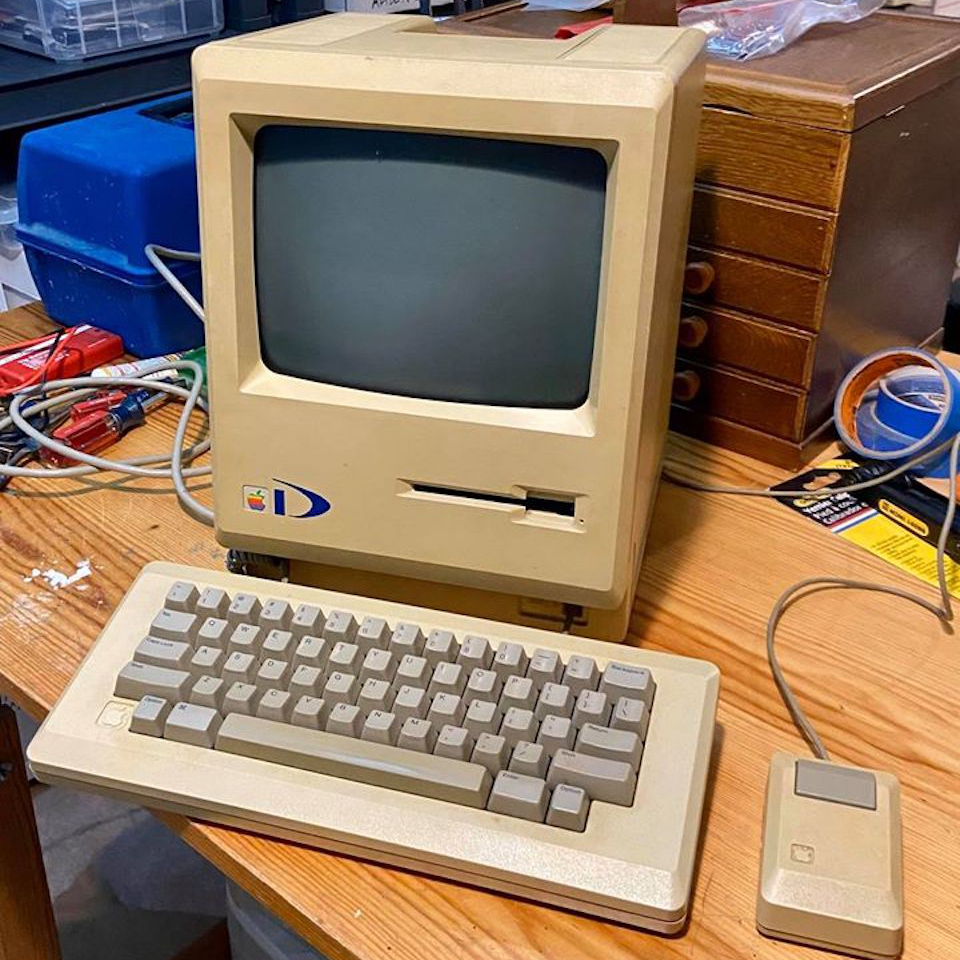
We got this computer several years ago from a fellow who went to Drexel University, hence the "D" stenciled on the front panel. We won't show you the details here, to protect the original owner's privacy, but it came with his installment agreement with the University, signed on March 7, 1984, promising to pay back a total of $1080.43, which was quite a discount on the retail price (a hefty $2,495, over $6000 in today's money).
Along with the original power cord, mouse, and keyboard, the computer included a box of much-used disks, the original System Disk, the manual, and a bunch of Apple stickers.
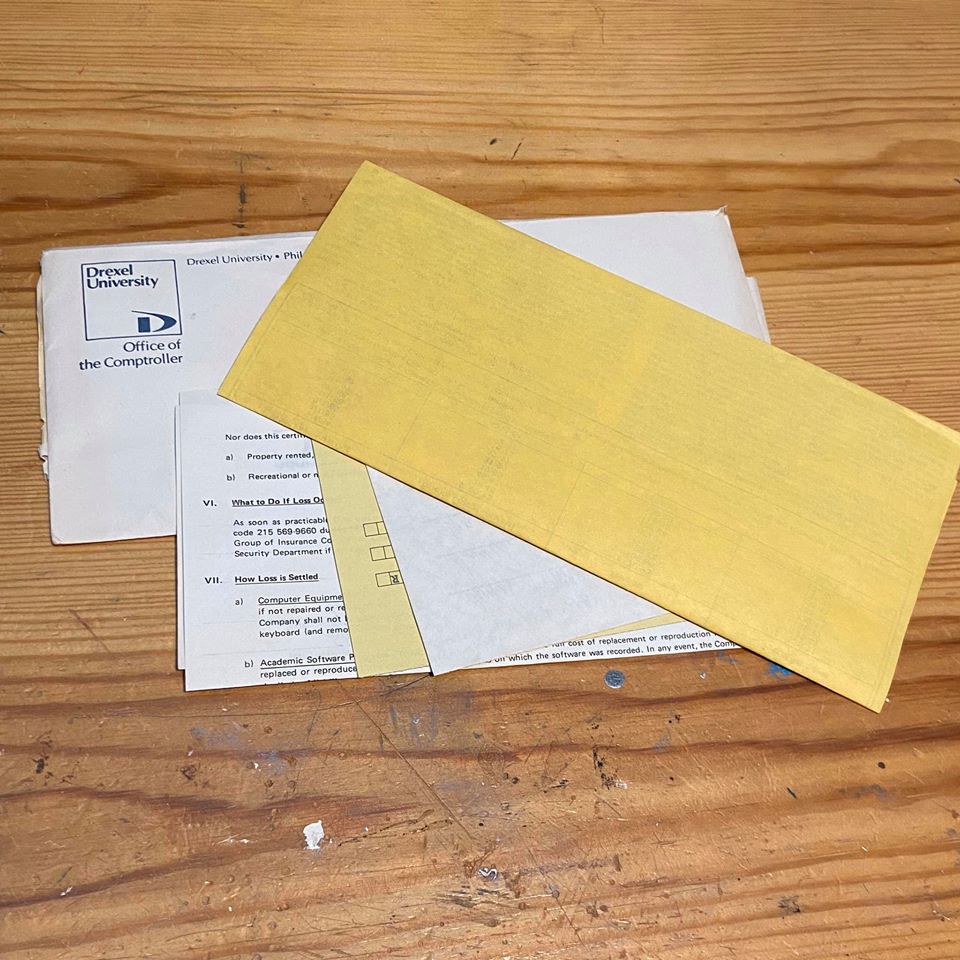
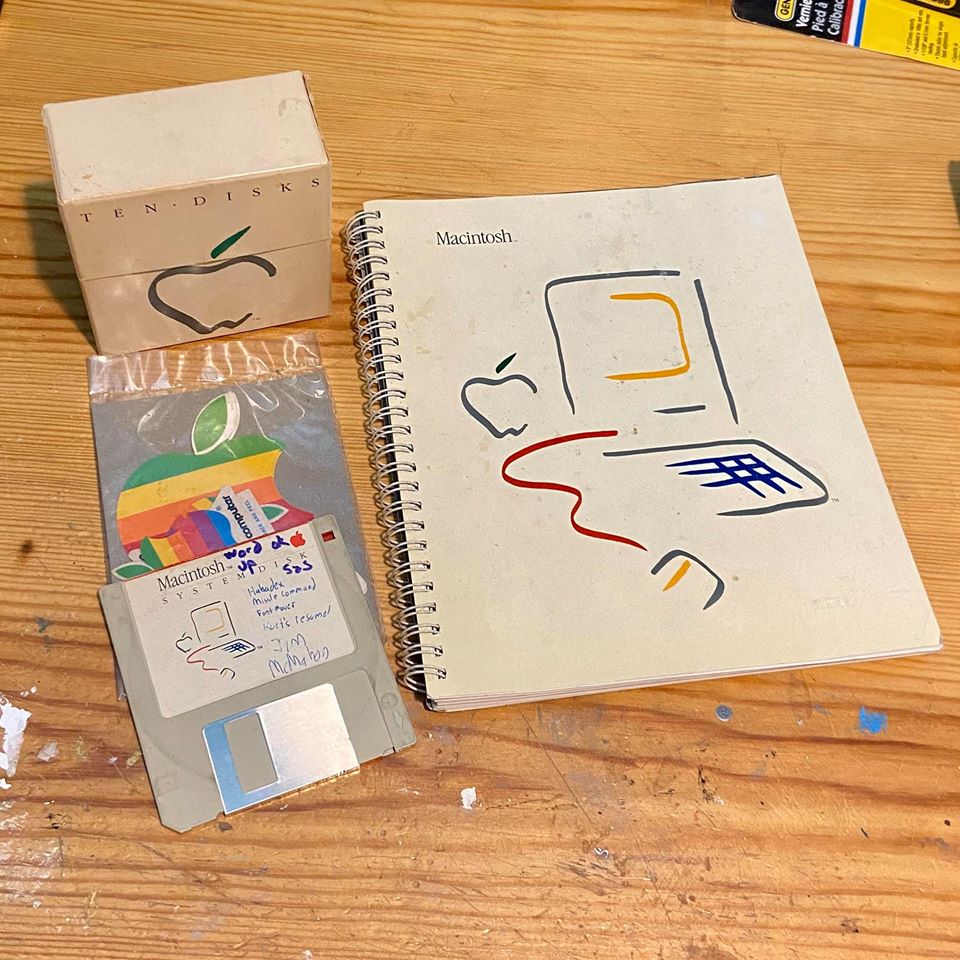
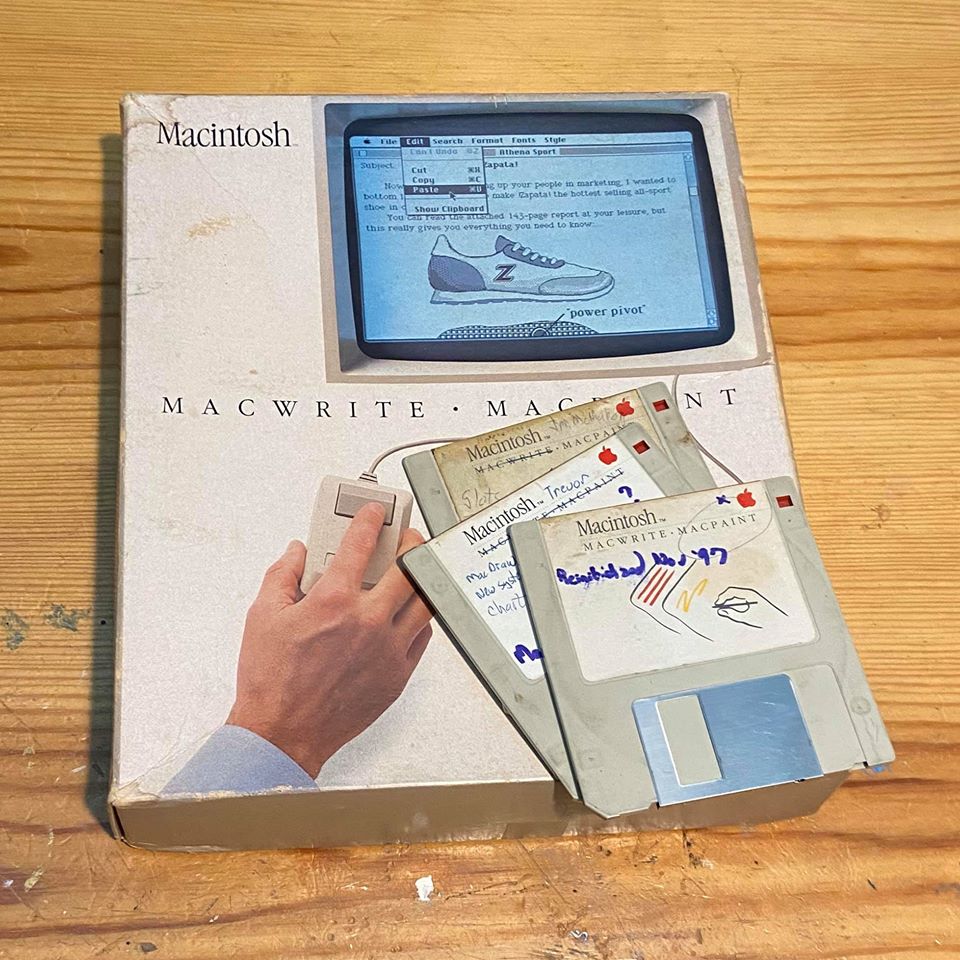
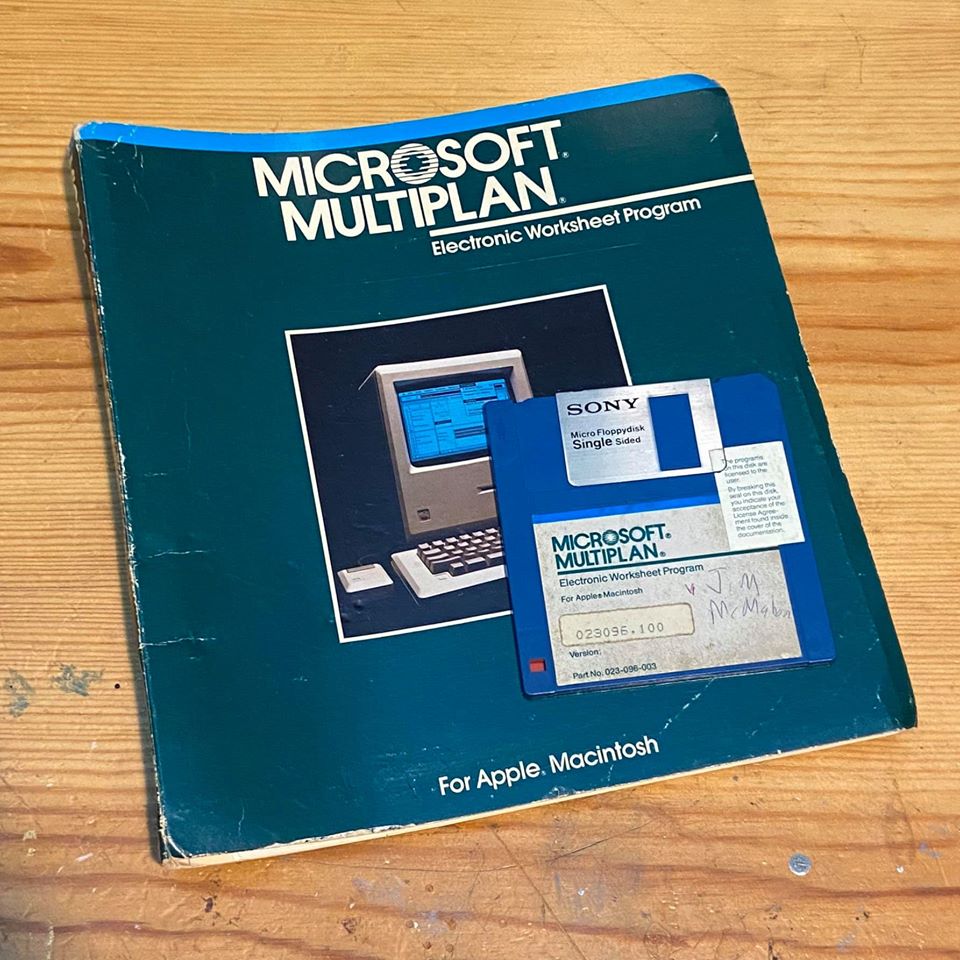
All of the included material was inside the MacWrite/MacPaint box, which included some MacWrite/MacPaint disks, but no manual for those programs. We were also given a Microsoft Multiplan disk and manual with the machine.
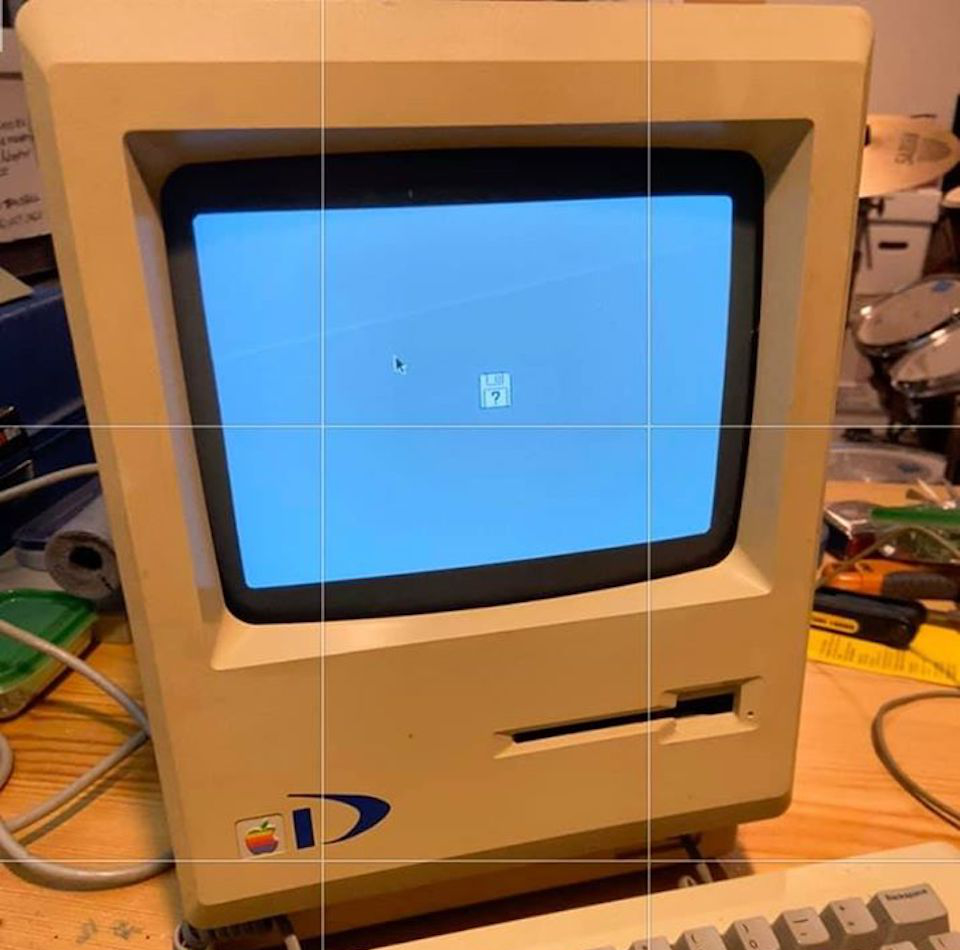
Our unit chimes when turned on (always a good sign), and we get a picture on the screen, but we can't do much more than that at this time, as the disk drive does not react at all when a floppy is inserted. We will take a look at it in an upcoming MOOT Workshop segment.
The original Macintosh (retroactively designated "128K" to differentiate it from later models) was released on January 24, 1984, and it changed everything.
Ok, not everything, exactly - but it changed the direction of computing. Apple didn't originate the concept of the mouse, point-and-click, and other elements of what has become the standard way of interacting with a desktop computer (by this, we mean the Graphical User Interface), but they were the first to bring it to market.
Before the advent of the GUI, interacting with a computer relied on typing commands. This meant remembering those commands, how to spell them, and what the syntax was. And this meant that there was no way you could interact - at all - with a computer without a decent amount of training. With a GUI, you could learn to work the computer by simply exploring it and trying things out. The interface was, in other words, "discoverable". The commands were in menus. To see what something did, you could just try it. This was a boon to those (like me) who happened to be poor typists with equally poor memories.
The original 128K Macintosh was the first mass-market computer with a GUI. This, along with its black-on-white display and compact, all-in-one form factor, made it a delight to interact with. It was a computer with a personality. Unfortunately, even with 128K of RAM (a prodigious amount in 1984) it barely had enough memory to work with. And it lacked a hard drive - all it had was a single 400K floppy drive. Although you might consider it a wonder that you could get an operating system, plus an application (MacWrite, for example), and a file to work on, all on the same 400K disk, it meant your files couldn't be very big. And copying them to another disk involved time consuming, repetitive swapping back and forth between the source disk and destination disk.
All of these flaws severely limited the actual usability of this machine - later models would soon offer substantial improvements. (The 512K "Fat Mac" was released just eight months later.) But what was most important was what the original Macintosh represented - a new way of computing. A way of computing that was more "user friendly." As you drop down some menus, double-click folders, and drag files around on your "desktop" (even if it's on a Windows machine), let's stop and remember this little computer, where it all began.
Steve Dockery, MOOT Director of Acquisitions